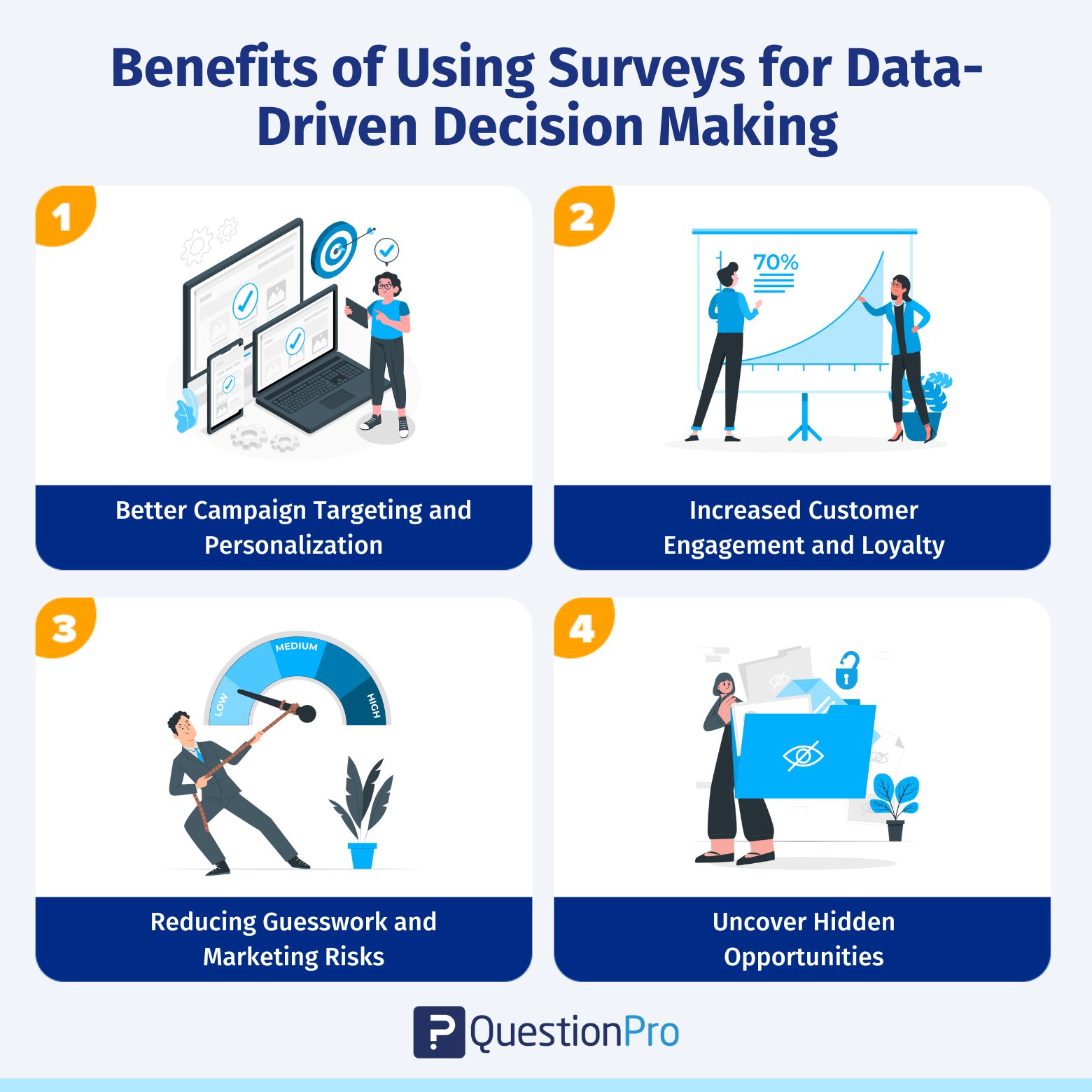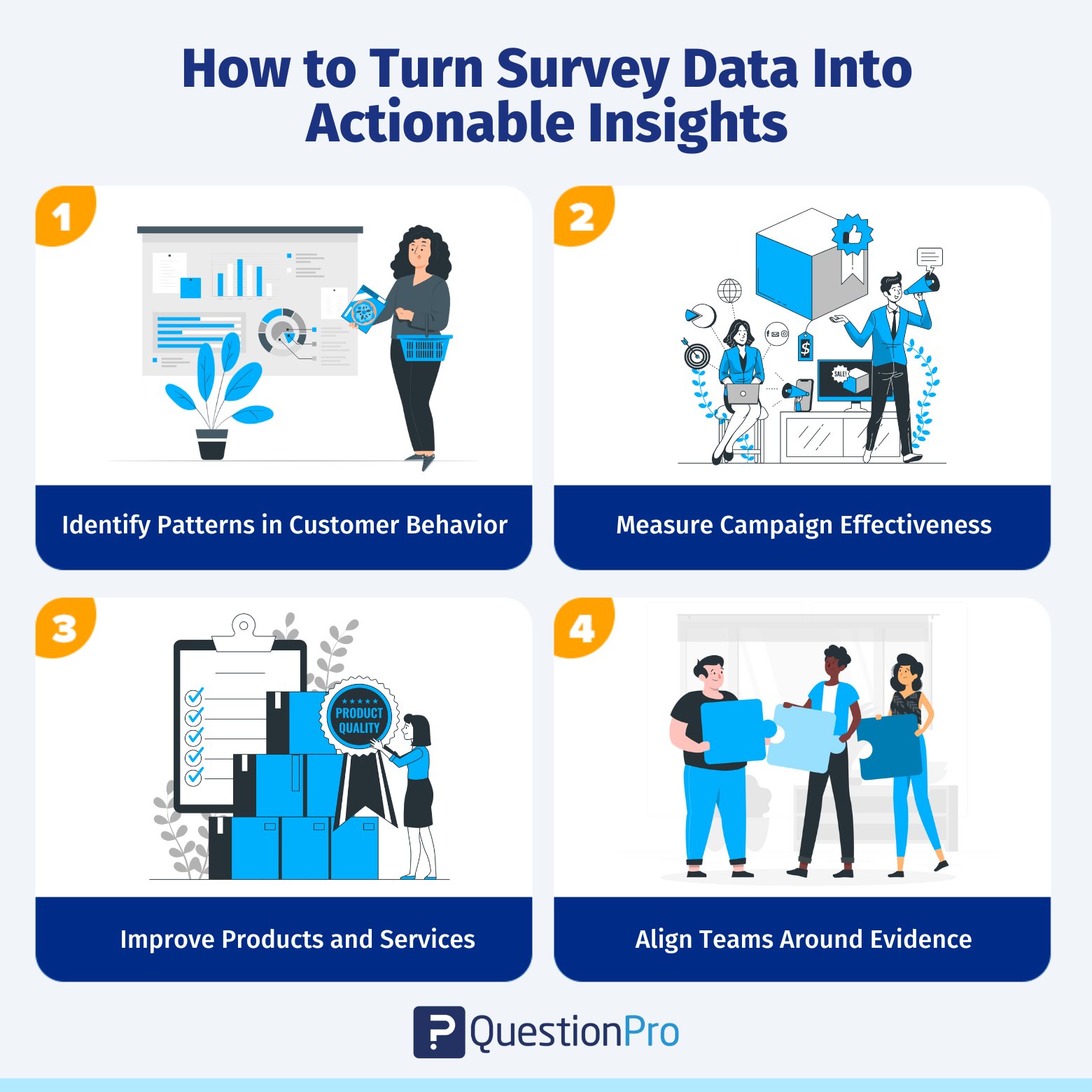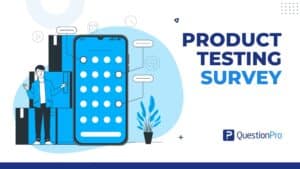
Modern marketing is about precision. The brands that thrive today are the ones that turn insights into action through data-driven decision-making. But while metrics like clicks, impressions, and conversions are valuable, they don’t always explain the why behind customer behavior.
Surveys provide that missing piece. They add context to the clicks, meaning to the metrics, and a direct line to what customers actually think and feel. For marketers who want campaigns that truly resonate, surveys are no longer an optional thing, but they’re essential.
By listening directly to your audience through surveys, you move beyond surface-level data and embrace real data-driven decision-making. The insights you gather turn raw numbers into actionable strategies that connect with customers, drive engagement, and deliver lasting results.
In this blog, we’ll explore why surveys are such a critical part of modern marketing and why every marketer should rely on them.
What Is Data-Driven Decision Making in Marketing
Data-driven decision making in marketing refers to the process of using factual data rather than assumptions or gut feelings to guide your marketing strategies. It involves collecting insights from your audience, analyzing trends, and making decisions based on evidence. When applied effectively, this approach helps you reduce uncertainty, target the right customers, and optimize campaigns for measurable results.
Unlike intuition-based marketing, which relies on personal experience or assumptions, data-driven marketing prioritizes facts. Instead of asking, “What do I think will work?” you ask, “What do the data and customer feedback indicate?” This approach minimizes risk and ensures your marketing strategies align with your audience’s actual needs and preferences.
Many well-known brands have seen impressive results by embracing this approach.
- Netflix uses viewing data and customer ratings to determine which shows to produce, ensuring content aligns with audience preferences.
- Spotify combines listening habits and survey feedback to create personalized playlists that maintain user engagement.
- Nike integrates purchase trends with survey insights to design products and campaigns that resonate with specific customer segments.
By grounding your marketing decisions on real insights, you shift from guessing to strategizing. This is the foundation of effective, data-driven decision-making in marketing.
Why Metrics Alone Aren’t Enough
Numbers provide valuable information, but they rarely tell the full story. Metrics such as clicks, impressions, and conversion rates can show what is happening in your campaigns, but they rarely explain why it’s happening. Without additional context, it is easy to misinterpret data and make decisions that do not fully address your audience’s needs.
For example, a high bounce rate on a landing page may appear negative at first. However, a survey could reveal that visitors found the information they needed quickly and then navigated to another page. In this case, the experience was positive, even though the raw metric seemed concerning.
Surveys fill the gap left by metrics alone. They provide direct insight into customer preferences, motivations, and pain points. By combining quantitative data with survey feedback, you can understand the reasons behind the numbers and make decisions that are not only data-informed but also truly customer-centered.
Metrics highlight the path, while surveys reveal the destination. Together, they create the foundation for effective data-driven decision-making in marketing.
The Role of Surveys in Data-Driven Marketing
Surveys function as a direct conversation with your audience. Rather than guessing what your customers want, surveys allow you to understand their thoughts, feelings, and needs. This makes them a critical tool for marketers who want to make smarter, more informed decisions.
Surveys do more than just collect opinions. They provide context to the numbers you already have. They can explain why a campaign underperformed, which features customers value most, or how people perceive your brand. With these insights, you can refine your marketing strategies to be more precise, personalized, and effective.
There are different types of surveys you can use depending on your goals:
- Customer feedback surveys: Understand satisfaction and loyalty.
- Market research surveys: Explore trends, behaviors, and opportunities in specific regions or demographics.
- Net Promoter Score (NPS) surveys: Measure how likely customers are to recommend your brand.
- Customer satisfaction surveys (CSAT): Assess happiness with your product or service.
- Product feedback surveys: Identify which features work well and which need improvement.
- Campaign evaluation surveys: Measure audience perceptions of advertising or branding efforts.
- Post-purchase surveys: Collect insights on the buying experience to improve the customer journey
By integrating survey insights with analytics, marketers can move from reactive decision-making to proactive strategy. Surveys turn raw data into meaningful insights, supporting effective data-driven decision making and helping you create campaigns that truly resonate with your target audience.
Benefits of Using Surveys for Data-Driven Decision Making
Surveys are more than a task on your marketing checklist. They are a pathway to smarter decisions, more effective strategies, and stronger customer relationships. Understanding their benefits helps you see why they are essential for data-driven decision-making.

- Better Campaign Targeting and Personalization
Surveys reveal what your audience truly cares about. This allows you to craft messages, offers, and experiences that feel personal and relevant. Rather than making broad assumptions, you can communicate directly with your customers’ actual needs and preferences.
- Increased Customer Engagement and Loyalty
When customers feel heard, they are more likely to engage with your brand. Surveys demonstrate that you value their opinions, which builds trust and strengthens long-term relationships.
- Reducing Guesswork and Marketing Risks
Relying only on intuition can lead to costly mistakes. Surveys provide concrete insights that guide your decisions, helping you avoid missteps and invest in strategies supported by real data.
- Uncover Hidden Opportunities
Surveys can highlight unmet needs, emerging trends, or new product ideas that metrics alone might miss. This insight creates opportunities for innovation and business growth.
By listening directly to your audience through surveys, you move beyond surface-level data and fully embrace data-driven decision-making. The insights gathered become actionable strategies that drive meaningful results.
Best Practices for Surveys in Marketing
Running surveys is one thing, but getting meaningful insights from them is what enables effective data-driven decision-making. Following these best practices helps ensure your surveys provide actionable results:
- Keep It Short and Focused
Long surveys can overwhelm respondents and lower completion rates. Focus on the questions that align directly with your goals. Concise surveys are more likely to generate honest and thoughtful answers.
- Ask Clear, Simple Questions
Avoid jargon or confusing language. Your goal is to hear what your audience really thinks, not to test their comprehension skills.
- Use the Right Question Types
Combine quantitative questions, such as rating scales or multiple-choice items, with qualitative open-ended questions. Quantitative data provides measurable trends, while qualitative responses offer deeper insights.
- Timing Matters
Send surveys when your audience is most likely to respond, such as during a product trial or an event. Proper timing can significantly increase response rates.
- Analyze and Act on Results
Collecting survey responses is just the beginning. You must analyze the data and apply the insights to your marketing strategies. Surveys only add value when they inform action.
- Follow Up When Possible
Show respondents that their input matters. A thank-you message or sharing how their feedback influenced a decision builds trust and encourages future participation.
By implementing these practices, you’ll ensure that your surveys serve as a foundation for meaningful data-driven decision-making that can help you design effective marketing strategies that achieve measurable results.
How to Turn Survey Data Into Actionable Insights
Collecting survey responses is only useful if you can translate them into actionable strategies. Surveys are most valuable when they support data-driven decision-making by providing insights that guide your marketing, product, and customer engagement decisions.

- Identify Patterns in Customer Behavior: Analyze survey responses to uncover trends in customer preferences and motivations. Understanding why people make certain choices helps you predict future behavior and align your campaigns with actual needs.
- Measure Campaign Effectiveness: Use survey data to evaluate how well your marketing messages resonate. This allows you to assess campaign performance beyond surface-level metrics like clicks or impressions.
- Improve Products and Services: Open-ended feedback can reveal areas for improvement in your offerings. These insights can help you address pain points, enhance features, and better meet customer expectations.
- Align Teams Around Evidence: Sharing survey insights across departments ensures that marketing, sales, and product teams make decisions based on the same data. This alignment reduces assumptions and promotes coordinated strategies.
By systematically applying survey insights, you can turn raw feedback into meaningful strategies, enhancing customer satisfaction and strengthening data-driven decision-making across your organization.
Examples of Marketing Decisions Based on Survey Data
Survey insights guide real marketing decisions. By analyzing responses from your audience, you can make choices that are aligned with customer needs, improve campaign effectiveness, and strengthen overall business performance.
1. Refining Product Features
Use surveys to identify which product features matter most to different customer segments. For instance, a smartphone brand may learn that battery life is most important to Asian customers, while camera quality is a top priority for European customers. This allows you to prioritize development and adjust your product roadmap with confidence.
2. Shaping Advertising Messages
Surveys help you test ad copy, visuals, and campaign messaging before launch. By comparing audience responses, you can identify the most effective headlines, ensure visuals match expectations, and adapt messages for different regions.
Example applications include:
- Testing ad headlines to see which captures attention best
- Measuring how memorable your campaign feels to your audience
- Comparing messages across regions to accommodate cultural differences
For example, A retail company may find that “discount pricing” resonates strongly in North America, while “sustainable sourcing” appeals more to European audiences. Using these insights can increase campaign effectiveness globally.
3. Improving Customer Experience
Surveys let you evaluate the customer journey, from website navigation to post-purchase support. Open-ended feedback reveals pain points and unmet needs that metrics alone cannot capture.
For example, an airline might discover that Middle Eastern passengers want more in-flight meal options, while U.S. travelers care primarily about on-time performance. Acting on these insights improves customer satisfaction and loyalty.
By applying survey data in these ways, you move from raw responses to informed, data-driven decisions that impact marketing strategies, product development, and customer engagement.
How QuestionPro Supports Data-Driven Marketing Decisions
Collecting survey data is only the first step. Turning it into actionable insights is where effective data-driven decision-making begins. Using the right tools makes this process easier and more reliable.
Platforms like QuestionPro simplify survey creation, distribution, and analysis, without requiring a dedicated data science team. You can:
- Build surveys with a wide range of question types, logic, and branching.
- Reach your audience through multiple channels, including email, social media, or embedded website surveys.
- Analyze responses in real time using visual dashboards, charts, and reports.
- Compare results across regions and different audience segments to uncover trends.
- Collect data from global research panels for broader consumer insights.
- Run surveys in multiple languages to reflect cultural and regional nuances.
- Integrate survey insights with your marketing or CRM platforms for smarter, faster decision-making.
The most effective survey tools do more than collect data. They also help you understand it. By using these platforms, marketers can turn customer feedback into strategies that resonate, campaigns that perform, and decisions that are truly data-driven.
Conclusion
Surveys are not just a nice-to-have. They are essential for marketers who want to make smarter and more confident decisions. By combining customer feedback with metrics, surveys provide context and insights that raw numbers alone cannot deliver.
When you embrace surveys, you are not only collecting data. You are listening to your audience, understanding their needs, and shaping strategies that truly connect. This is the core of data-driven decision making, turning insights into actions that drive meaningful results.
To make your marketing campaigns more effective, start integrating surveys into your strategy today. Listen, learn, and let the data guide your decisions. You will discover how much closer it brings you to your customers and how much more impact your campaigns can achieve.
Frequently Asked Questions (FAQs)
Answer: Surveys provide the context behind numbers like clicks, impressions, and conversions. They reveal customer preferences, motivations, and pain points, allowing marketers to make decisions that are truly informed and aligned with audience needs.
Answer: By collecting feedback directly from customers, surveys help you refine product features, shape advertising messages, and enhance customer experiences. This leads to campaigns that are more personalized, relevant, and effective.
Answer: Some common survey types include:
1. Customer feedback surveys for satisfaction and loyalty
2. Net Promoter Score (NPS) surveys to gauge recommendations
3. Product feedback surveys for feature optimization
4. Market research surveys for trends and audience behavior
5. Post-purchase surveys to improve the customer journey
Answer: Identify patterns in responses, evaluate campaigns, improve products and services, and align teams with shared data. Applying survey insights in these ways transforms raw data into decisions that drive results.
Answer: Platforms like QuestionPro allow you to design surveys, collect responses from multiple channels, analyze data in real time, and integrate insights with marketing or CRM platforms. This helps marketers turn feedback into strategies and actions.







